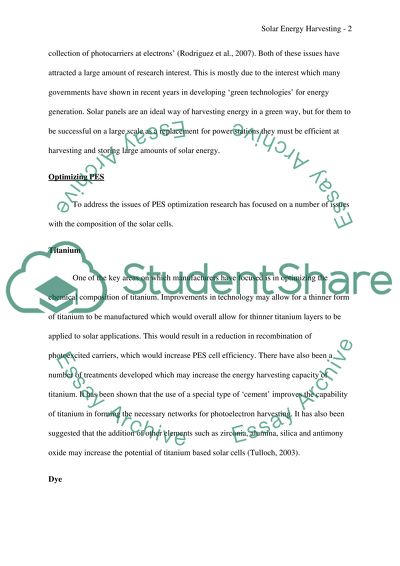Cite this document
(“Solar Energy Harvesting Term Paper Example | Topics and Well Written Essays - 750 words”, n.d.)
Solar Energy Harvesting Term Paper Example | Topics and Well Written Essays - 750 words. Retrieved from https://studentshare.org/engineering-and-construction/1529739-chemistry-essay
Solar Energy Harvesting Term Paper Example | Topics and Well Written Essays - 750 words. Retrieved from https://studentshare.org/engineering-and-construction/1529739-chemistry-essay
(Solar Energy Harvesting Term Paper Example | Topics and Well Written Essays - 750 Words)
Solar Energy Harvesting Term Paper Example | Topics and Well Written Essays - 750 Words. https://studentshare.org/engineering-and-construction/1529739-chemistry-essay.
Solar Energy Harvesting Term Paper Example | Topics and Well Written Essays - 750 Words. https://studentshare.org/engineering-and-construction/1529739-chemistry-essay.
“Solar Energy Harvesting Term Paper Example | Topics and Well Written Essays - 750 Words”, n.d. https://studentshare.org/engineering-and-construction/1529739-chemistry-essay.


